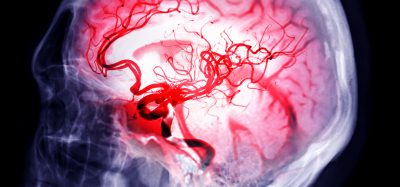Synthetic tissue helps restore and repair erectile function in animal models
Posted: 6 January 2023 | Izzy Wood (Drug Target Review) | No comments yet
Chinese scientists have developed a synthetic tissue that repairs penile injuries and restores normal erectile function in pigs.


Scientists from South China University of Technology in Guangzhou, China, have developed a synthetic tissue that repairs injuries and restores normal erectile function in a pig model.
The findings of the study, published in Matter, suggest that the artificial tunica albuginea (ATA), which mimics a fibrous sheath of tissue necessary to maintain erections, shows promise for repairing penile injuries in humans.
The team’s research focus has recently turned to producing biomaterials to address issues in male reproductive health, including erectile dysfunction, infertility, and Peyronie’s disease: a connective tissue disorder that occurs as a result of injury from sex.
Around half of men between the ages of 40 and 70, reportedly, experience some form of erectile dysfunction, while an estimated 5 percent suffer from Peyronie’s disease, in which scar tissue forms in the tunica albuginea, causing pain and a range of other effects.
“We largely foresaw the problems and results of the ATA construction process, but we were still surprised by the results in the animal experiments, where the penis regained normal erection immediately after the use of ATA,” said Xuetao Shi, a researcher at the South China University of Technology.
“The greatest advantage of the ATA we report is that it achieves tissue-like functions by mimicking the microstructure of natural tissues,” he added. “This design approach is not limited to the biomimetic design of tunica albuginea tissues but can be extended to many other load-bearing tissues.”
Although patients with damaged tunica albuginea tissue can be treated by making patches from other tissues in the patient’s body combined with extracellular matrix, these patches come with disadvantages. Sometimes the immune system rejects them or complications occur at the donor site, and since their microstructures are different from that of natural tunica albuginea, it is difficult for these patches to replace the natural tissue perfectly.
To address this issue, the scientists developed ATA based on polyvinyl alcohol, which has a curled fibre structure similar to that of the natural tissue.
As a result, the synthetic material has biomechanical properties that mimic those of tunica albuginea. The researchers performed laboratory experiments to investigate the artificial tissue’s toxicity and blood compatibility, since it is designed to remain in the body for a long time, and determined that it should not be harmful to other tissues.
Next, they tested the ATA in Bama miniature pigs with injuries to the tunica albuginea. The researchers found that patches made from the artificial tissue restored erectile function, suggesting the patch successfully replaced the natural tissues’ function.
The researchers analysed the effect of the ATA patches after one month, finding that while the artificial tissue did not restore the microstructure of surrounding natural tissue, it developed fibrosis comparable to that in normal tissue and achieved a normal erection after the penis was injected with saline.
“Our work at this stage focuses on the repair of a single tissue in the penis, and the next stage will be to consider the repair of the overall penile defect or the construction of an artificial penis from a holistic perspective,” concluded Shi.
The researchers also plan to investigate techniques to repair other tissues, including the heart and bladder.
Related topics
Drug Targets, Synthetic Biology, Targets
Related conditions
erectile dysfunction, Peyronie’s disease
Related organisations
South China University of Technology
Related people
Xuetao Shi








